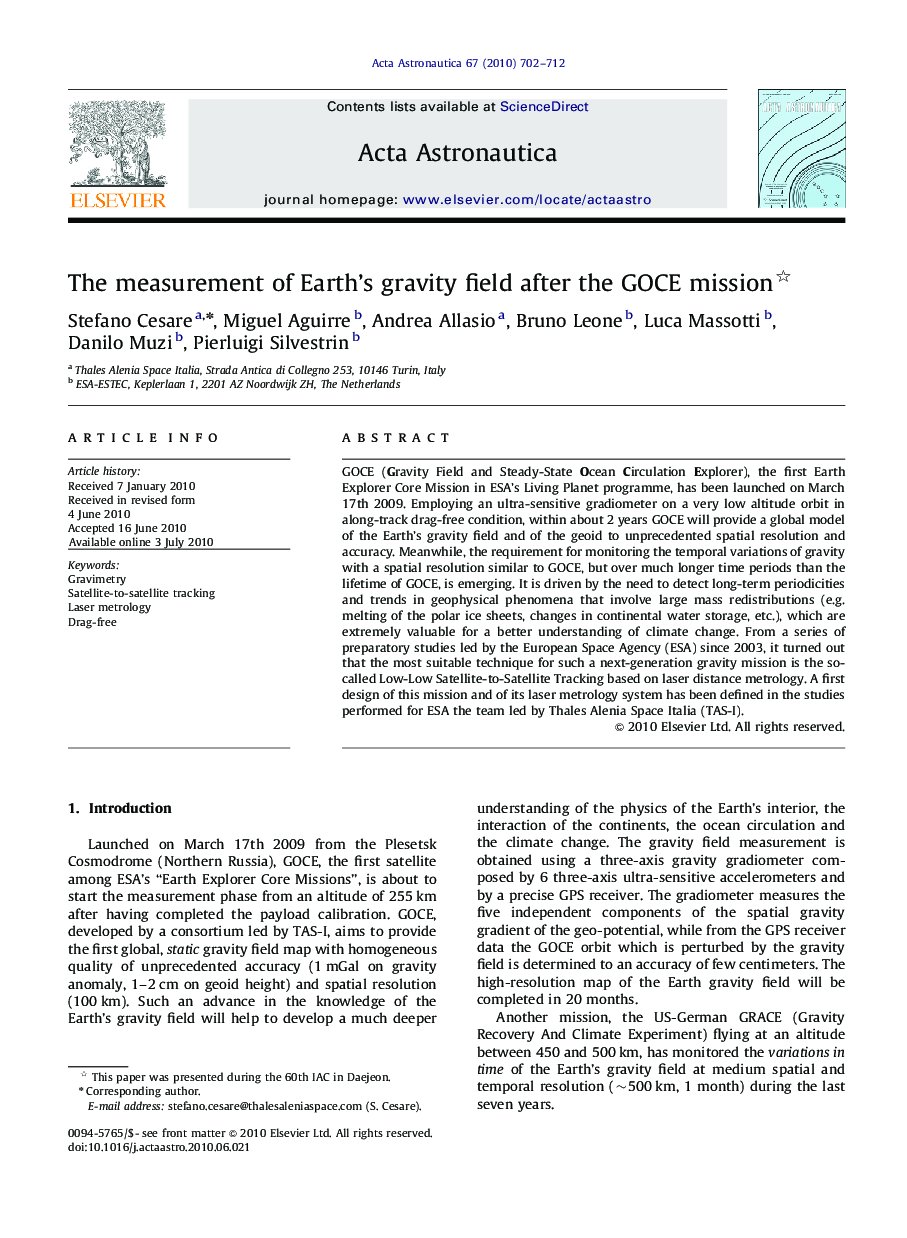| کد مقاله | کد نشریه | سال انتشار | مقاله انگلیسی | نسخه تمام متن |
|---|---|---|---|---|
| 1715631 | 1519993 | 2010 | 11 صفحه PDF | دانلود رایگان |

GOCE (Gravity Field and Steady-State Ocean Circulation Explorer), the first Earth Explorer Core Mission in ESA’s Living Planet programme, has been launched on March 17th 2009. Employing an ultra-sensitive gradiometer on a very low altitude orbit in along-track drag-free condition, within about 2 years GOCE will provide a global model of the Earth’s gravity field and of the geoid to unprecedented spatial resolution and accuracy. Meanwhile, the requirement for monitoring the temporal variations of gravity with a spatial resolution similar to GOCE, but over much longer time periods than the lifetime of GOCE, is emerging. It is driven by the need to detect long-term periodicities and trends in geophysical phenomena that involve large mass redistributions (e.g. melting of the polar ice sheets, changes in continental water storage, etc.), which are extremely valuable for a better understanding of climate change. From a series of preparatory studies led by the European Space Agency (ESA) since 2003, it turned out that the most suitable technique for such a next-generation gravity mission is the so-called Low-Low Satellite-to-Satellite Tracking based on laser distance metrology. A first design of this mission and of its laser metrology system has been defined in the studies performed for ESA the team led by Thales Alenia Space Italia (TAS-I).
Journal: Acta Astronautica - Volume 67, Issues 7–8, October–November 2010, Pages 702–712